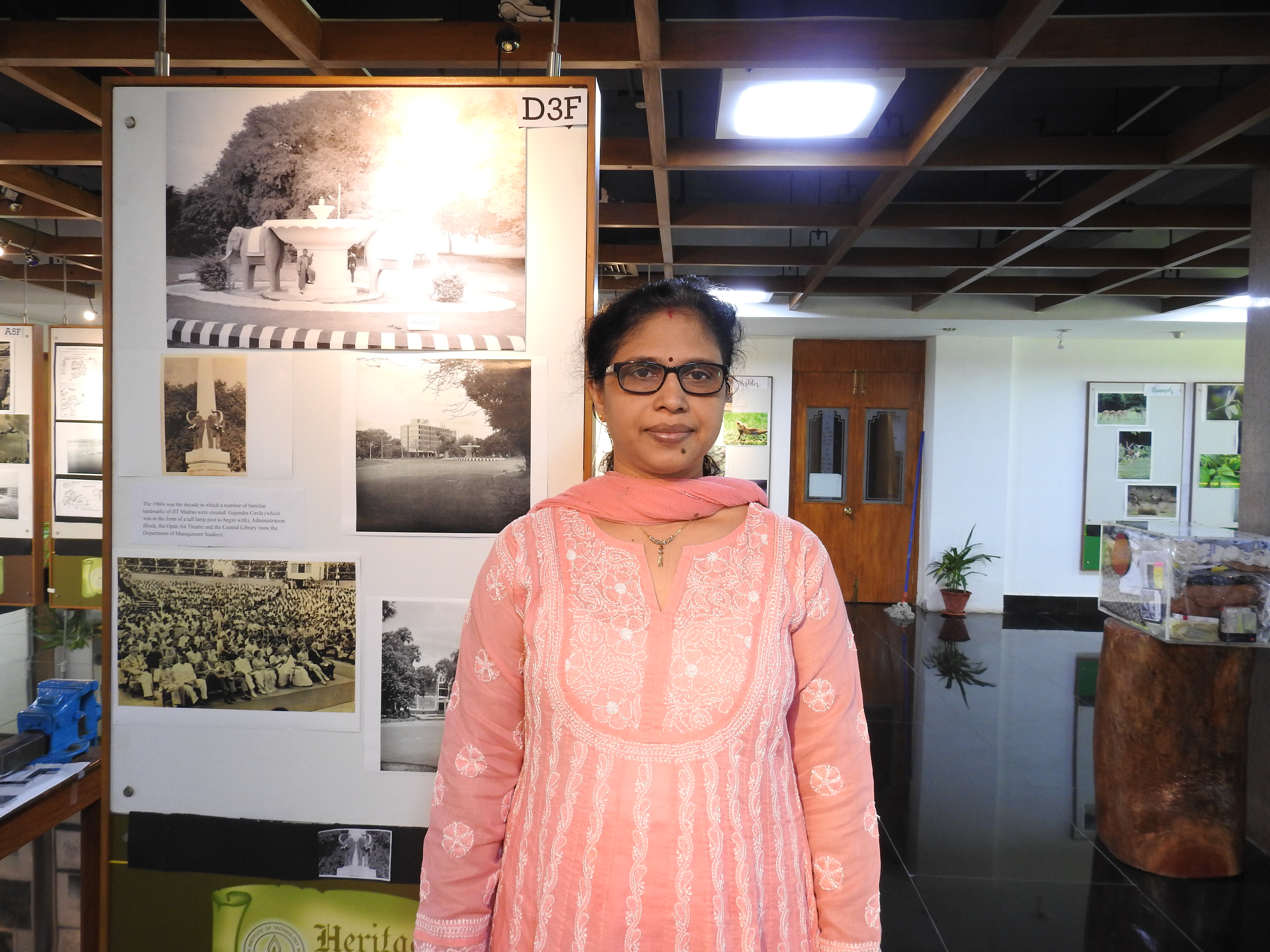Edited by: Sharayu Shejale
The Administrative Block is one sorry excuse for architecture from any angle. Believe me, I have tried. The drab façade of officialdom that it presents, even on that rainy November afternoon when everything appears draped in rosy tints, automatically brings to mind Svengalian old men and the stamping of imprimaturs. No wonder I had a case of the heebie-jeebies. Before I saw the Heritage Centre, that is.
The Heritage Centre is tucked away on the ground floor, unmarred by existence. It is hemmed in by sleek glass walls on all four sides and looks like a futuristic anachronism when compared to the rest of the building. I am here to meet the person inside. As I approach and tap lightly on the glass, the sinister image of authoritative double-domes and files piled one on top of the other slowly fade. Kumaran sir beckons. But I am not here to meet him. He is only too happy to oblige and shuffles away with a smile. Finally, we are alone – Mamata Dash and I – and I am here to interview her.
She is the sort of person you would expect in a fairy tale of some sort, with a constant impish grin etched on her face; the true life and soul of IITM’s official history vault.
Mamata ma’am is incredibly modest. She immediately assumes that I am here to talk to her about the Heritage Centre itself. When I interject, saying that I am here to talk to her, about her, she seems rather taken aback. What, me? I ask whether I could record. She is rather shy, and shakes her head profusely. She grows shier by the second, aggravated perhaps by my own lack of social skills. When all attempts at normal conversation fail, I turn to the list of questions I had put together.
It begins like a locker-room interrogation. Name? Mamata. Full name? Mamata Dash. As we move on to the Heritage Centre itself, she opens up and her cheeks flush bright red. Mamata ma’am has been working in the Heritage Centre for the past three years. She arrives at nine-thirty, when all of us are busy napping in class, and officially checks around five-ish. She whispers, as if in a Shakespearian aside: Sometimes I work till six. Maybe half past. Why, I ask, bewildered at the thought of voluntarily working over-time. Why not? It is fun, no? She shoots back. Even as we talk, she gets up and goes over to the bookshelf to realign some of the big coffee-table books. She is not happy that they have been shoddily bunged in by whoever bunged them in. It becomes all too clear that Mrs Dash is a perfectionist. I wish I had this kind of motivation. Sigh. Moving on.
Her eyes light up as we move on to everyday life. I keep nudging her about her personal life, only to be told that the Heritage Centre has become so closely interspersed with what would term one’s personal life that she cannot talk about the latter without bringing the former in. It’s like dragging your muddy shoes inside after a rainy day, she says.
Kumaran sir (the curator of the Centre, one could say, and former alumnus too), along with Mamata ma’am are the custodians of IITM’s six-decade-long history. Whenever high-ranking officials or foreign dignitaries arrive, their tour of the campus proceeds from the doorsteps of the Heritage Centre.
Mamata ma’am has had the privilege of guiding them around, as they murmur and nod, with occasional Hmms and Interestings. She giggles in delight as she weaves her stories. The delight, as it turns out, is infectious. Modiji did not visit though, she bursts out laughing.
Students are a rare sight, she says. When this rare species does make its occasional cameo, it turns out to be people like Yours Truly. Embattled T5E correspondents. It’s a no-brainer, she says, with a singular mixture of wonder and resentment. At this point, I change tactics. What about your past life, ma’am? Before IITM came a-calling? Thank God, it worked.
Mamata ma’am hails from Odisha. She worked for a Dutch agriculture-based company. From her descriptions of it, it seems like an itinerant life.
She has always been enamoured by the IITs, it seems. Mythical institutions where the best minds of the country double-down and solve the technological conundrums we face.
A phone call arrives. Mamata ma’am excuses herself. ‘My kids’, she beams once the call has ended. She has been residing in the campus for the past fifteen years. I must have seemed visibly taken back, for she says, ‘I told you I have always loved IITs, no’. Mamata Dash married Professor Dillip Kumar Chand, who is a professor in the Chemistry department at IIT Madras. All’s well that ends well. Two more students have arrived at this point. As I edge out of the room, I can hear her voice trailing off behind me, ‘Please visit whenever you please’. Please do. Mamata ma’am will make optimists of the whole lot of us. Pakka.





Oh offcourse she is what you said,she has always been an inspiration. We grew up hearing her dedication for studies,she was very studious. We have heard she will lock herself and study for hours without break,also she was great in elocutions we have heard. What she is doing now is of great purpose apart from a 9to5 job.